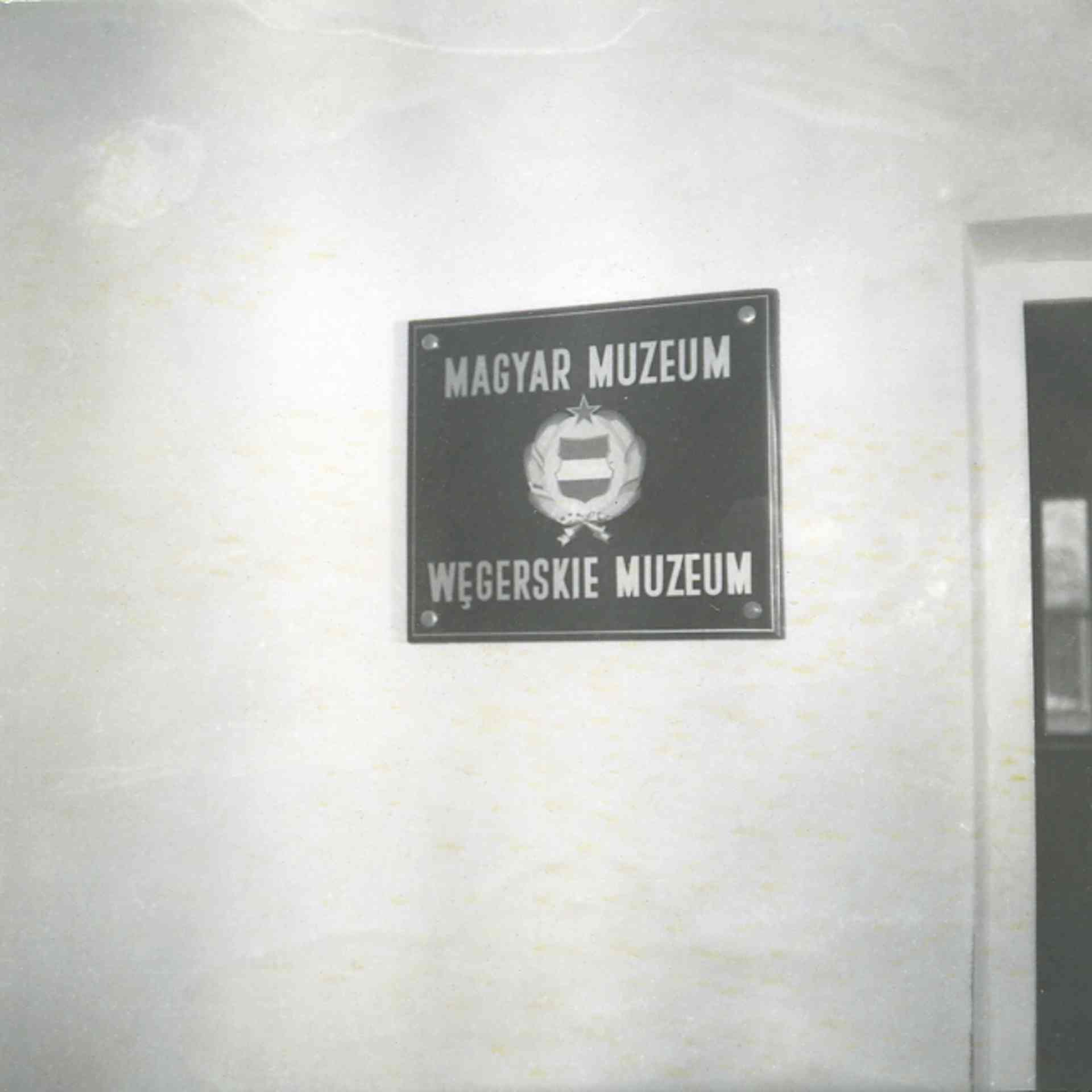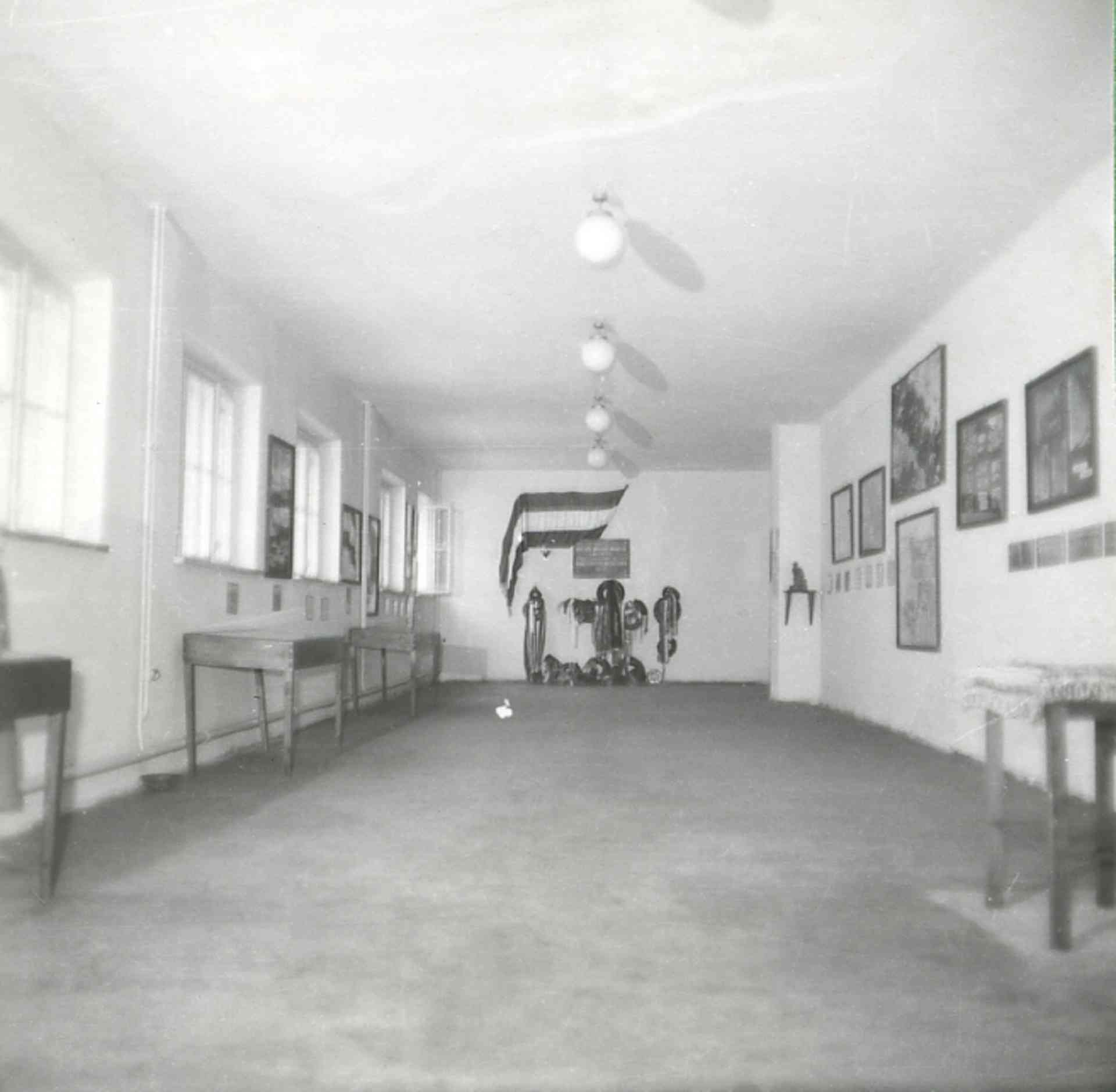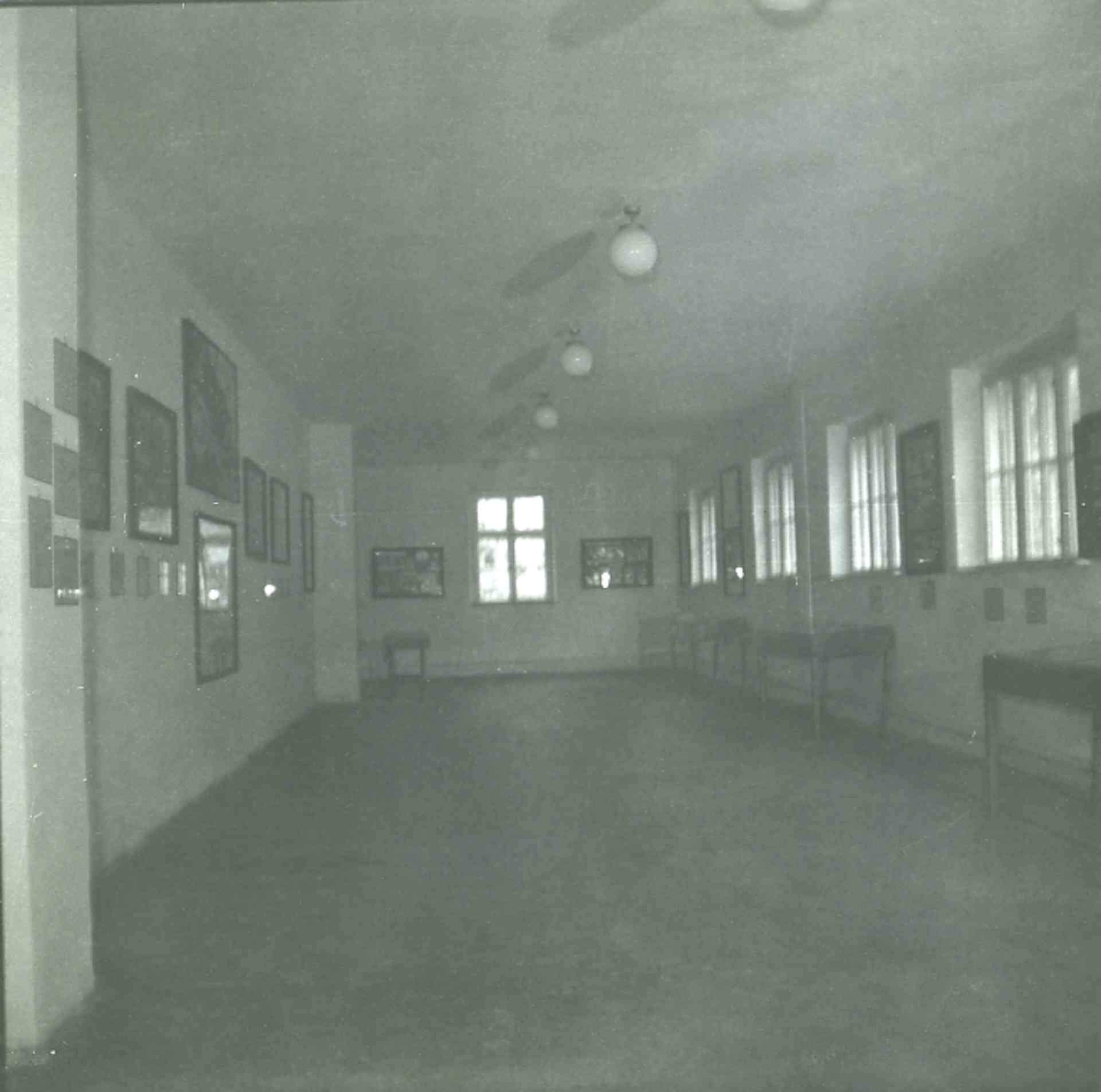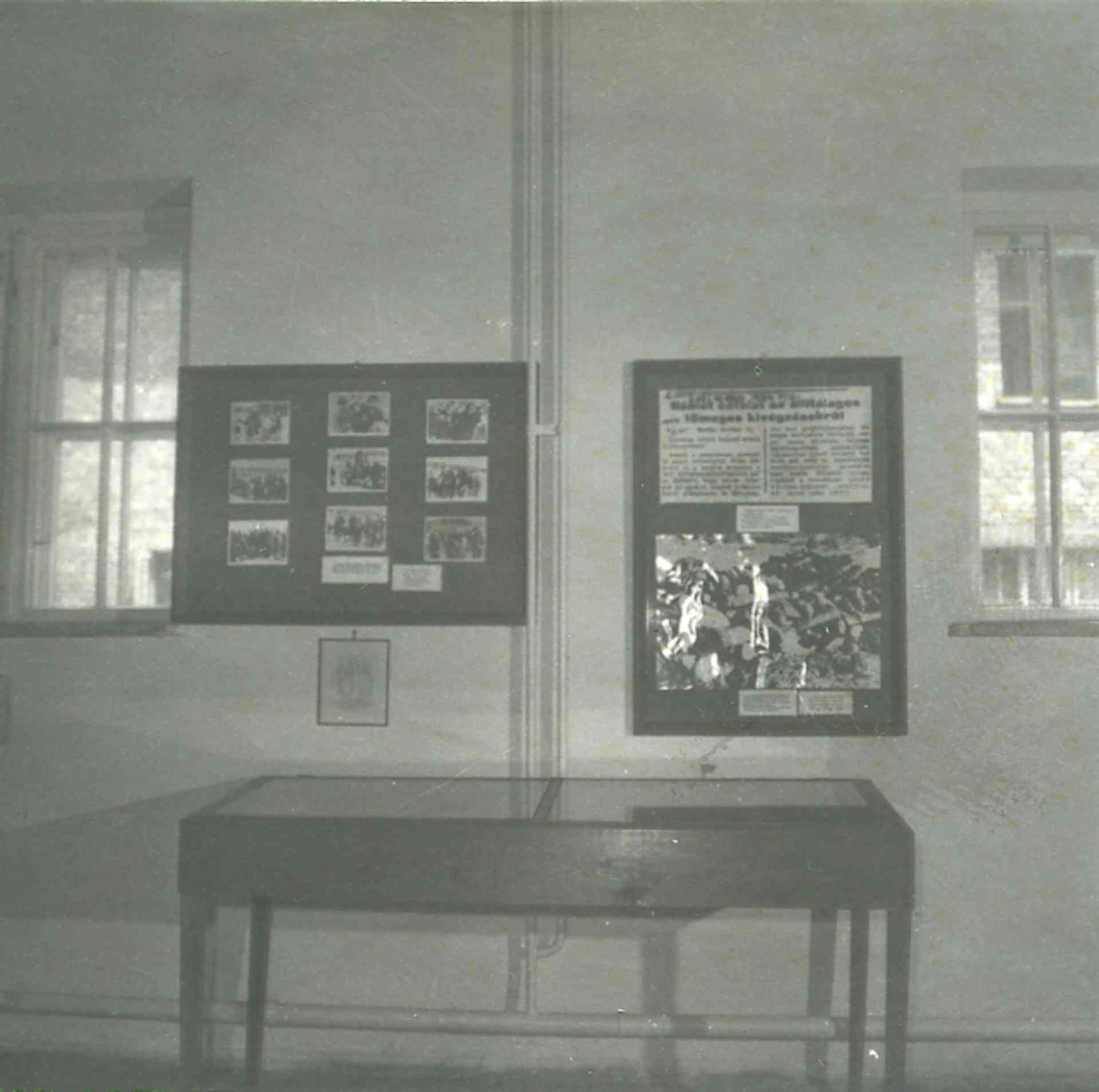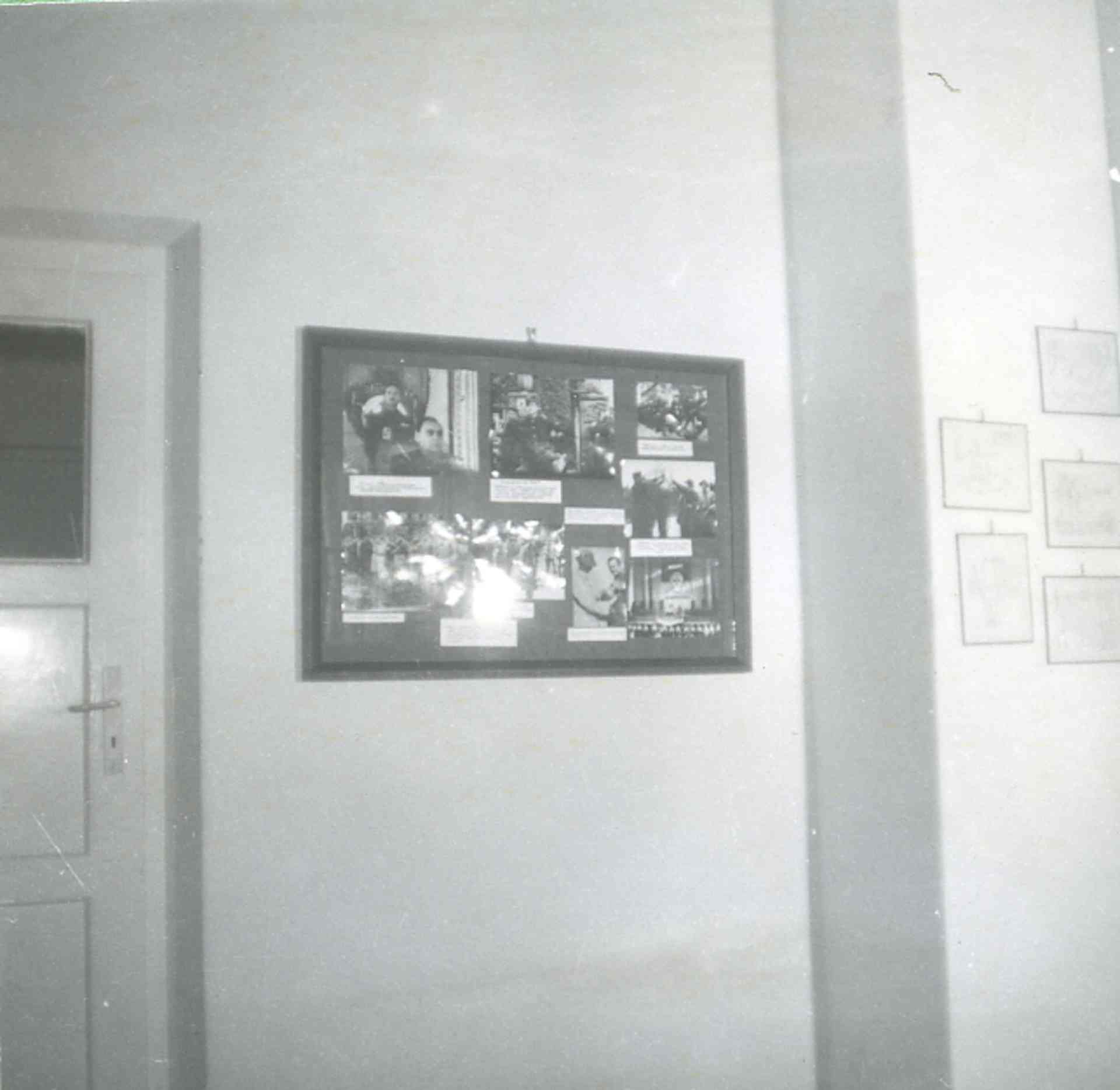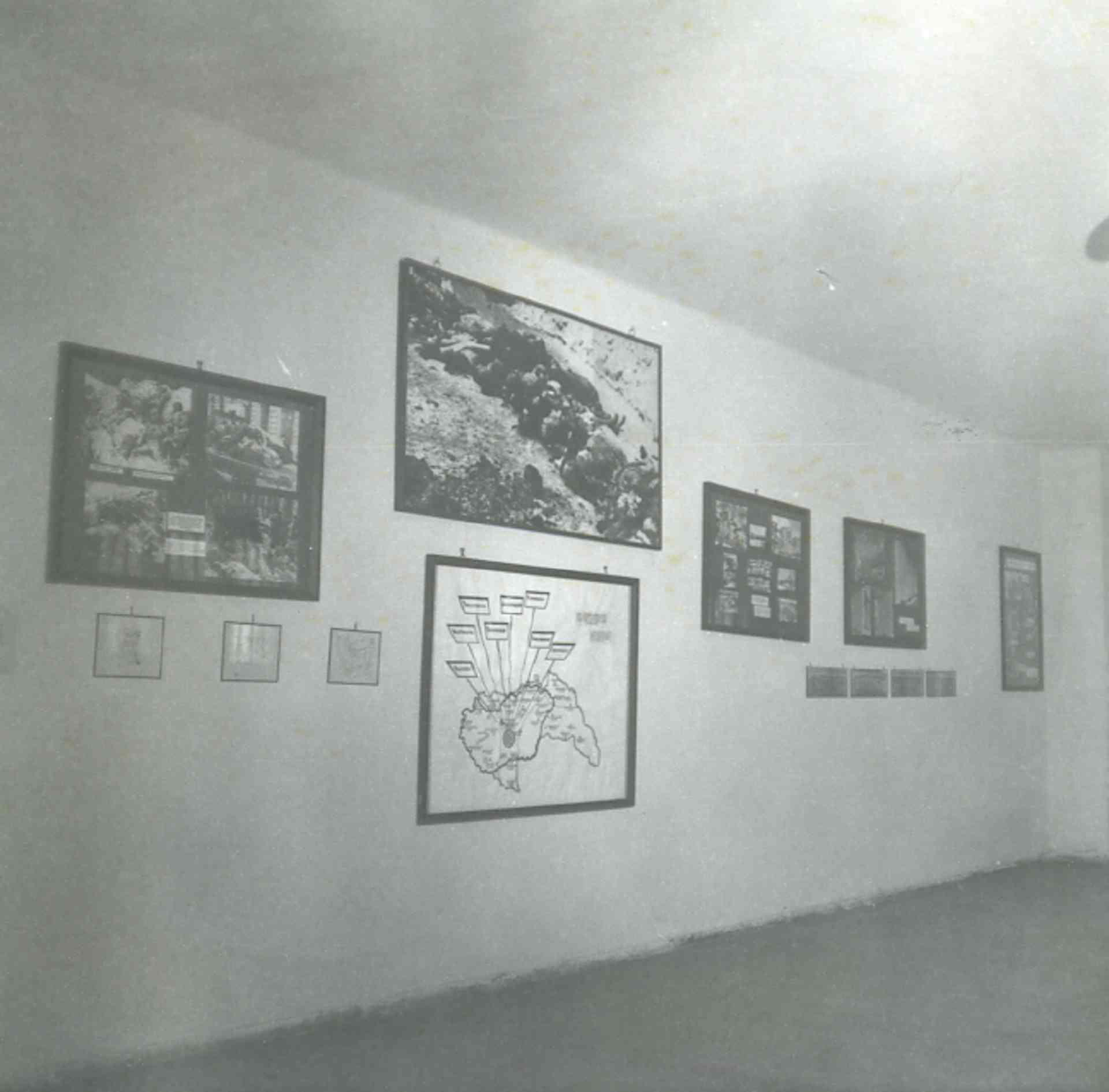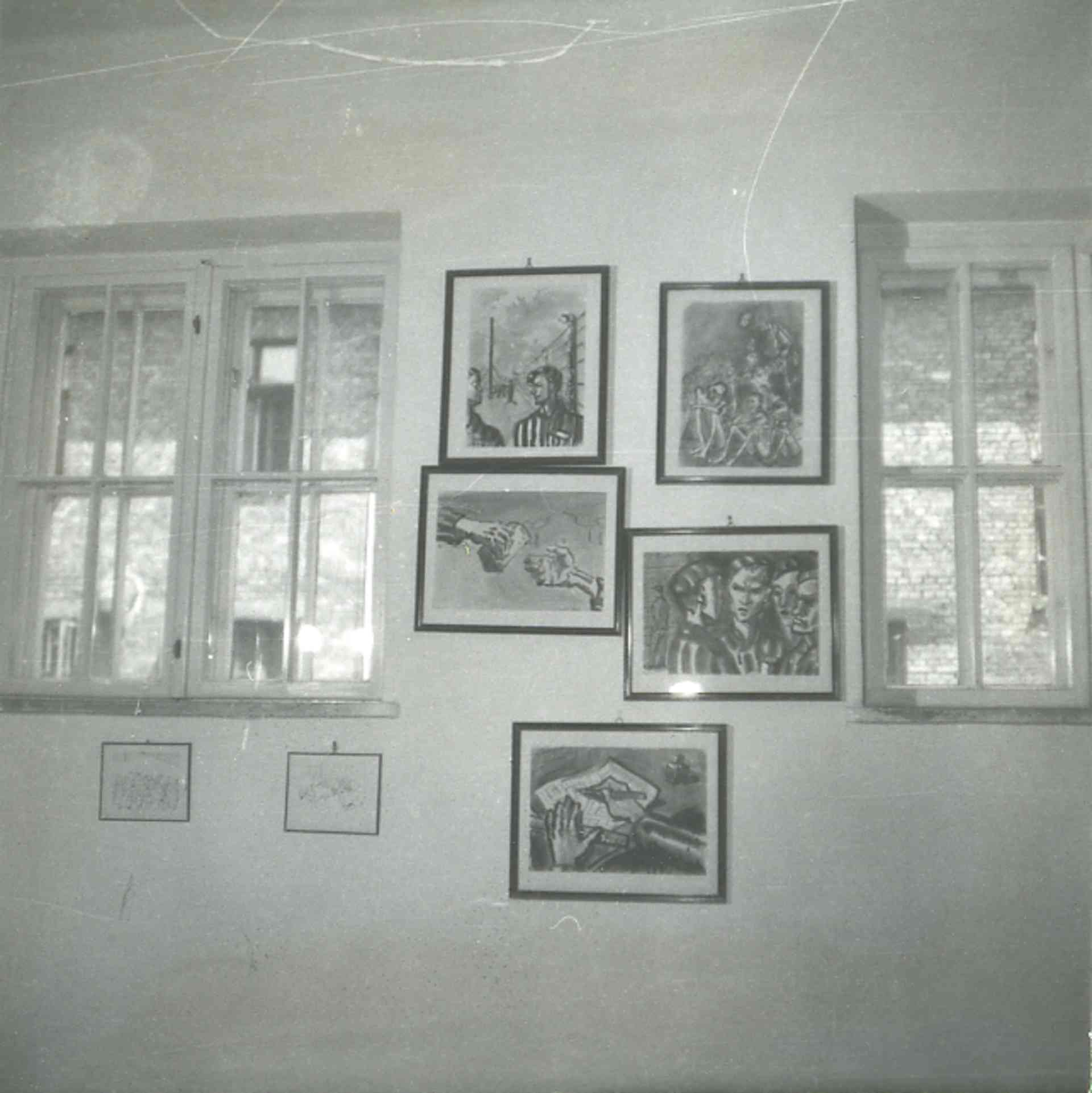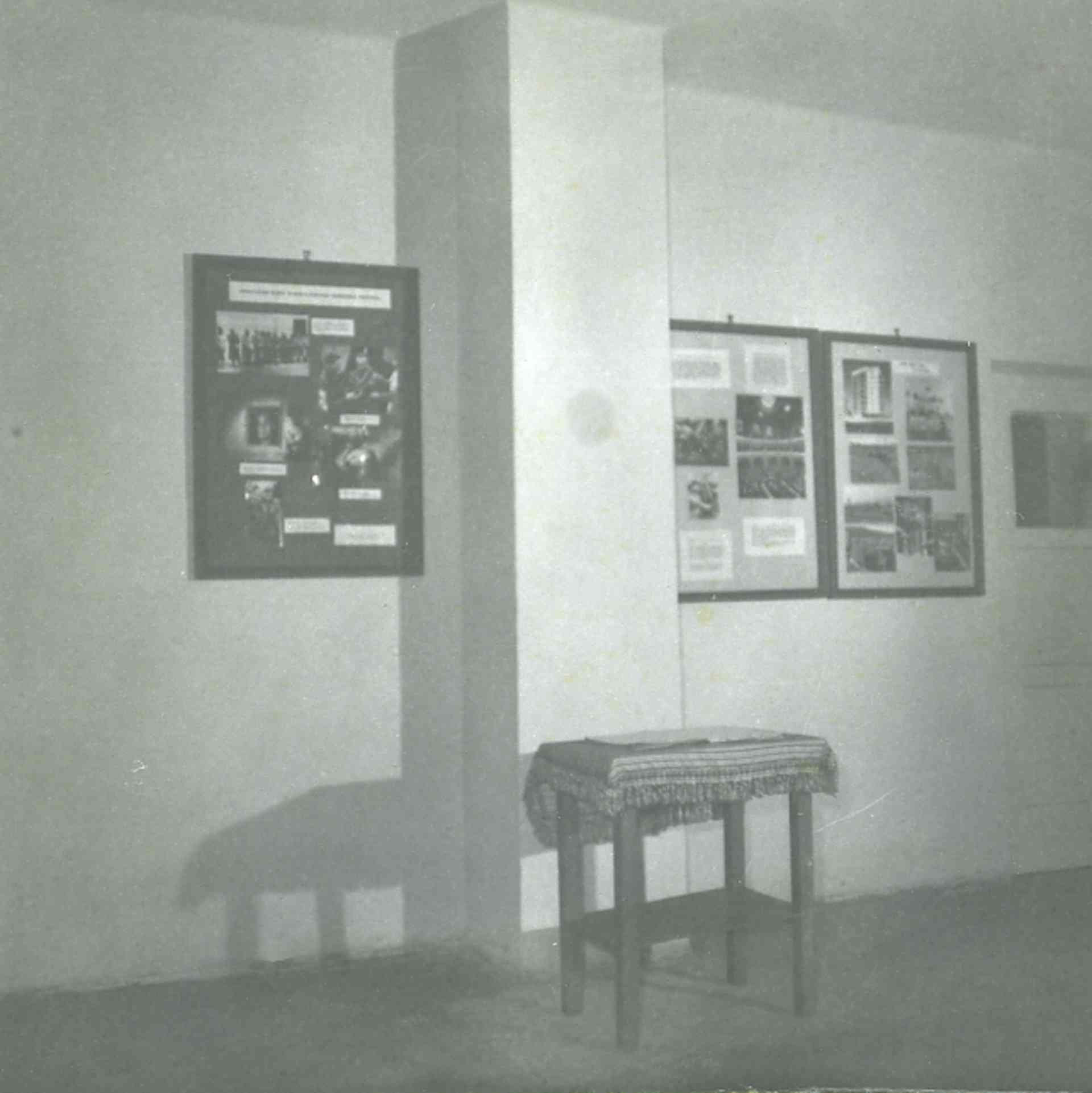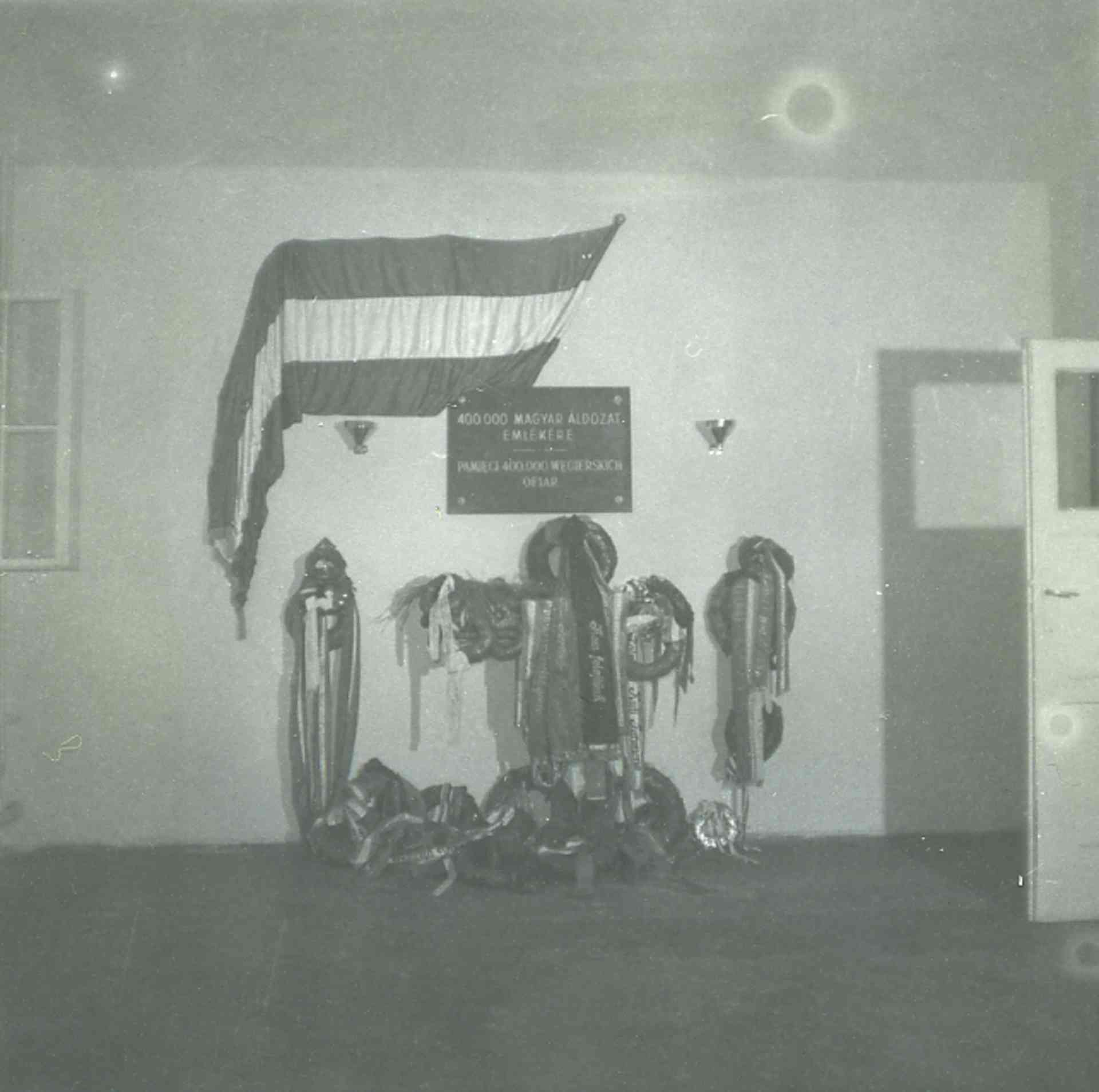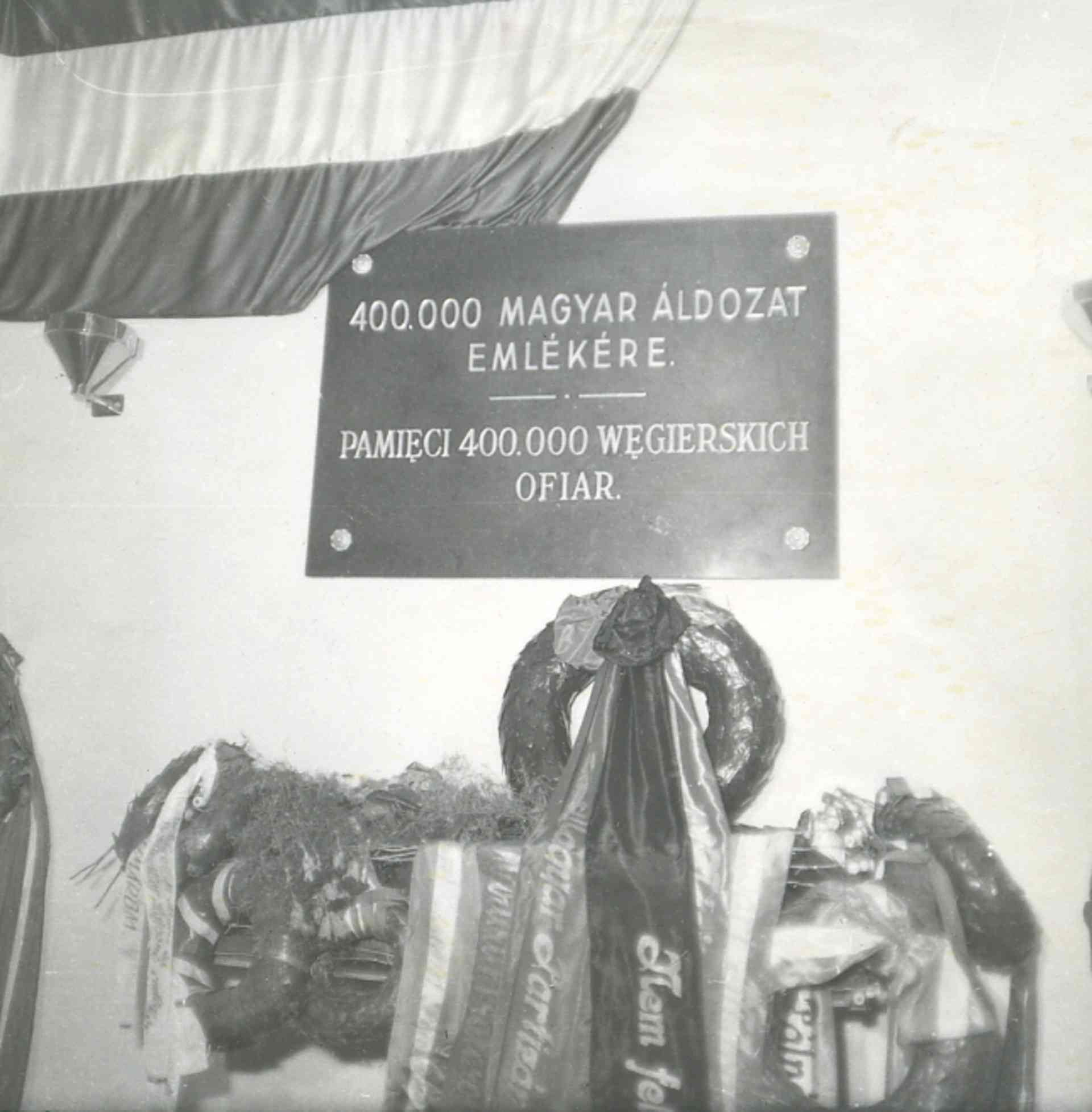Commissioned Memory

Auschwitz-Birkenau State Museum
1960
Opened in 1960, the short-lived, modest exhibition was one of the first national exhibitions in Auschwitz (alongside Czechoslovakia’s). In addition to documents and photographs, the small room also housed artworks illustrating the historical material, shown in this exhibition on interior photographs on the opposite wall.
The works were mainly created immediately after the war and can therefore be interpreted as testimonies and authentic illustrations of the historical narrative. They include the works of two women artists: the prints of Ágnes Lukács’s album Auschwitz: Women's Camp and Rózsa Káldor's sculpture, Hunger.
However, the large-scale artwork presented here was also included. It has been preserved in the Hungarian National Museum’s storage without any information about the work or its provenance. It was most probably brought home in preparation for the 1965 exhibition and placed in the Legújabbkori Történeti Múzeum (LTM, Museum of Contemporary History), which was responsible for organizing the new exhibition. The provenance and context of the ephemeral work, which was intended as an exhibition decoration, have been forgotten. It was transferred from the LTM’s successor, the Labor Movement Museum, to the National Museum upon the closure of the former.
The starting point for the composition is a drawing in Simon Wiesenthal’s 1946 KZ. Mauthausen. It shows deportation trains heading for the mouth of a skeleton wearing an SS cap, symbolizing both Nazism and death. (The drawing itself is reminiscent of the man-eating “Moloch” in Fritz Lang’s 1927 film Metropolis.) This is enlarged, transformed, and concretized by the painting: the symbolic figure is replaced by the figure of Hitler depicted as a vampire, with the crematoria of the concentration camps, specified by the inscriptions, behind him, and the abbreviations of the railway companies involved in the deportations, including the Hungarian State Railways (MÁV), on the sides of the trains. The composition thus shifts from Wiesenthal’s symbolic representation towards a more concrete narrative, identifying the perpetrators and the locations.
